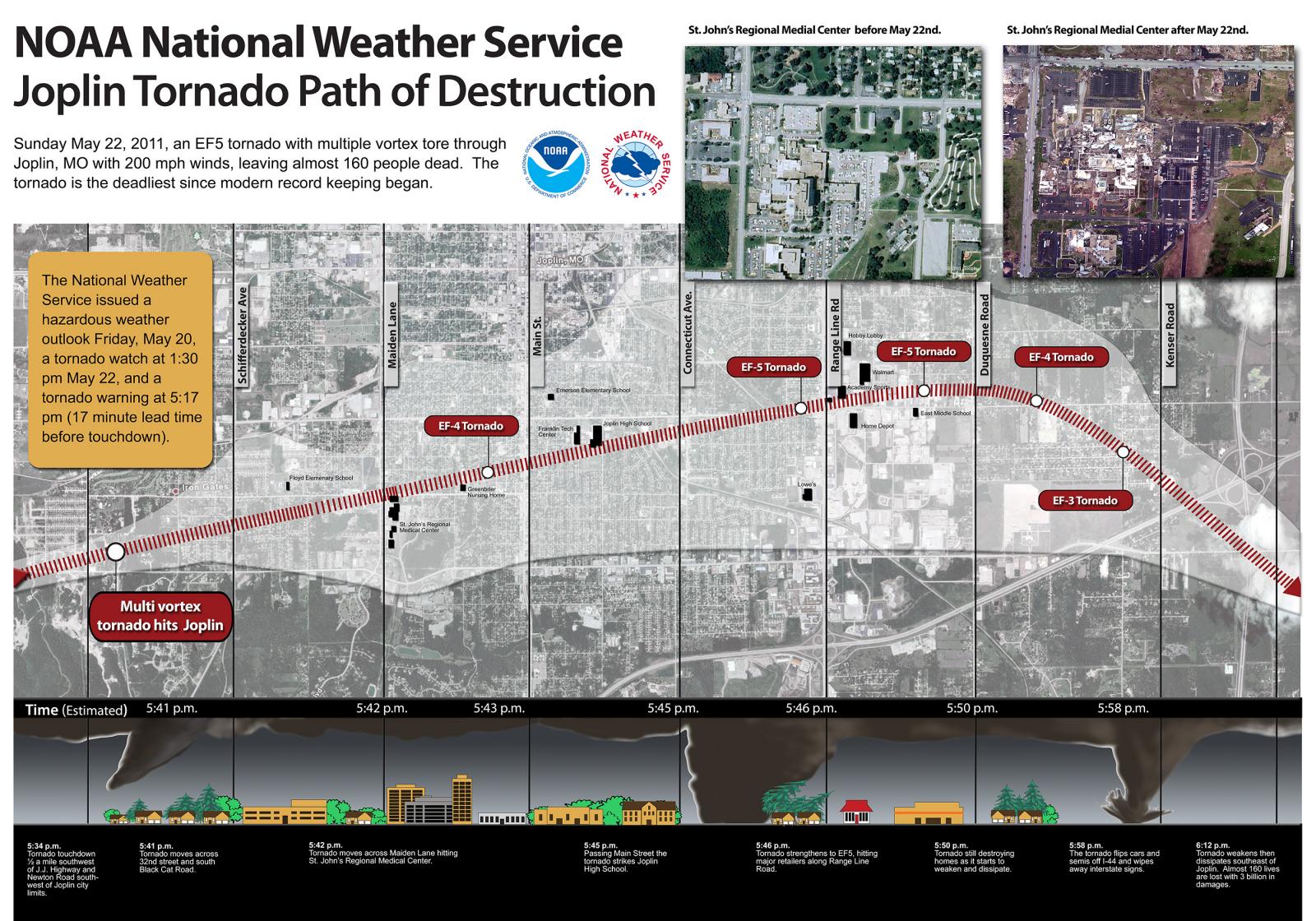News Around NOAA
National Program
On a hot and humid Sunday afternoon on May 22, 2011, a supercell thunderstorm tracked from extreme southeast Kansas into far southwest Missouri (NWS Springfield, County Warning Area). This storm produced an EF-5 (greater than 200 mph) tornado over Joplin, Mo., resulting in 158 fatalities and over 1000 injured in the Joplin area. This storm along with others generated additional tornadoes, wind damage and flash flooding across far southwest Missouri.
The Joplin tornado is the deadliest since modern record keeping began in 1950 and is ranked 7th among the deadliest tornadoes in U.S. history. 2011 was the fourth deadliest tornado year in U.S. history.
Tragedies like this fuel the resolve to build a Weather-Ready Nation. The work of the entire weather and emergency management community – from the National Conversation to nationwide radar upgrades to pilot projects to new public alert methods – is driven by a desire to make sure the tragic impacts of the tornadoes in 2011 are never repeated. In this month’s edition of Scientific American, NOAA Administrator Dr. Jane Lubchenco and National Weather Service Director Dr. Jack Hayes go into detail on how new technologies will help increase lead times and save more lives. And in the end, that’s what Weather-Ready Nation is all about – saving lives.
US Dept of Commerce
National Oceanic and Atmospheric Administration
National Weather Service
News Around NOAA
1325 East West Highway
Silver Spring, MD 20910
Comments? Questions? Please Contact Us.


